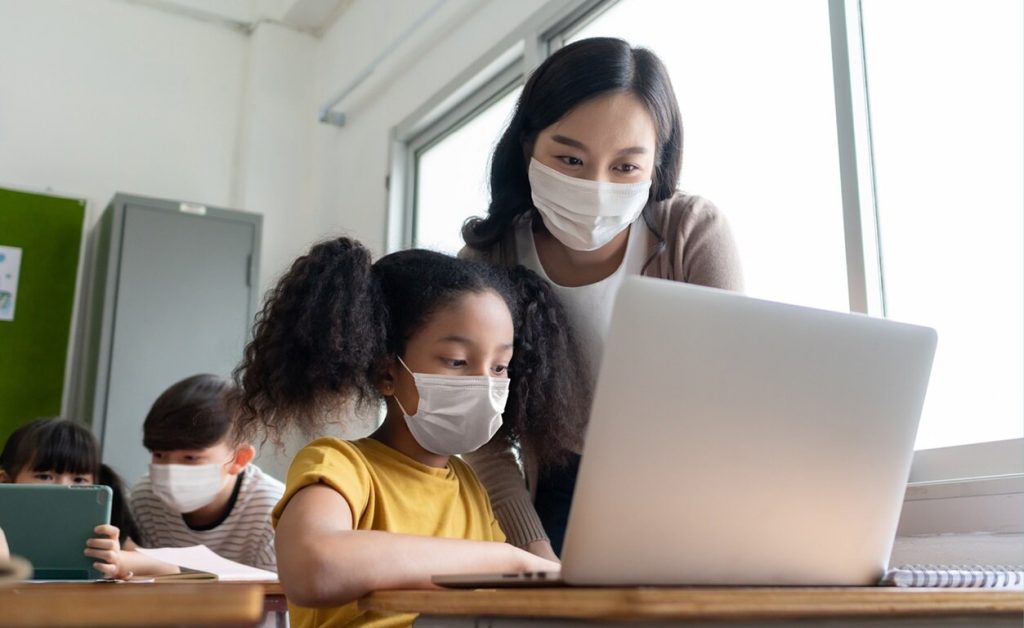
Slowly but surely, schools are shifting back to in-person instruction. However, before we rush back to the way things used to be, it’s important to reflect upon what worked well this year and use that perspective to enhance how we operate. It may be simpler to resume business as usual but, if nothing else, this pandemic has forced us to re-evaluate. Now we have an opportunity to move forward with intention.
In some ways, hybrid and distance learning created positive changes, and we can use those lessons to improve our classroom instruction. Here are some things to consider:
- Scheduling: Instead of setting rigid schedules that allot specific times to each subject, how can we be more flexible to better meet student needs? For example, if a student has mastered the day’s math objective, perhaps they can spend their extra time on an area where they need additional support. Giving students a level of control over what they can work on establishes autonomy and develops self-direction. It also allows teachers to give more time to students who need it. And at the very least, we should pay attention to the research that shows the benefits of a later school start time.
- Distance Learning: Along with flexible schedules, what if we could still include a distance learning option? Some students may have health concerns or other unique situations that make remote learning ideal for them. Continuing to provide distance learning meets the needs of students and helps them become independent learners.
- Collaboration: While social interaction is important, effective communication can take many different forms. Consider still incorporating online discussions and video conferencing alongside the usual in-person meetings. Some students are more likely to participate in discussions, whether in-person or virtual, when they have more think time or the option to contribute in writing instead of verbally.
- Connections: We can still take advantage of things like virtual field trips, Zoom calls and pen pals to help students learn from and make connections with people and experts around the world. And teachers can as well. It’s never been easier to connect with professional peers, which can be especially helpful for content teachers in smaller districts who may often feel like they are working in isolation.
- Course Offerings: Push collaboration and connection even further. Can we provide courses to students from other districts or offer courses jointly? Can we work with other districts to add to the courses offered? Working together increases opportunities for students and districts alike.
- Anytime, Anywhere Education: We’ve proven that we can be flexible when thinking about what education looks like. It doesn’t mean all kids get the same thing at the same time and in the same way. We can lean into some of what we’ve set up for remote learning to give students more options to learn when it is best for them. Some students are more productive at night. Some may experience an illness requiring them to stay home. Making instructional materials accessible outside the classroom can help students participate even when they can’t physically be in class.
- Equity: Of all the things on this list, equity is the one thing that is non-negotiable. We cannot lose sight of the equity concerns that were raised when we shifted to distance learning. While that shift may have expedited one-to-one initiatives or raised awareness about the lack of internet access, inequitable education still exists. Let’s keep this top of mind as we plan ahead. Let’s prioritize professional development in culturally-responsive pedagogy and anti-bias education, reviewing assessment practices, including diverse perspectives in curriculum and using accessible technology tools.
Careful reflection is important. Take some time to think about how far we’ve come and the true impact of our instruction. Educators have proven we’re the toughest of professionals. Students will benefit from our persistence and determination to ensure we’re always giving them the best.
Whether in person or online, you’ll be ready to support your students with the strategies you learn in our education programs. Explore all of our fully online education programs to find the one that fits your career.

